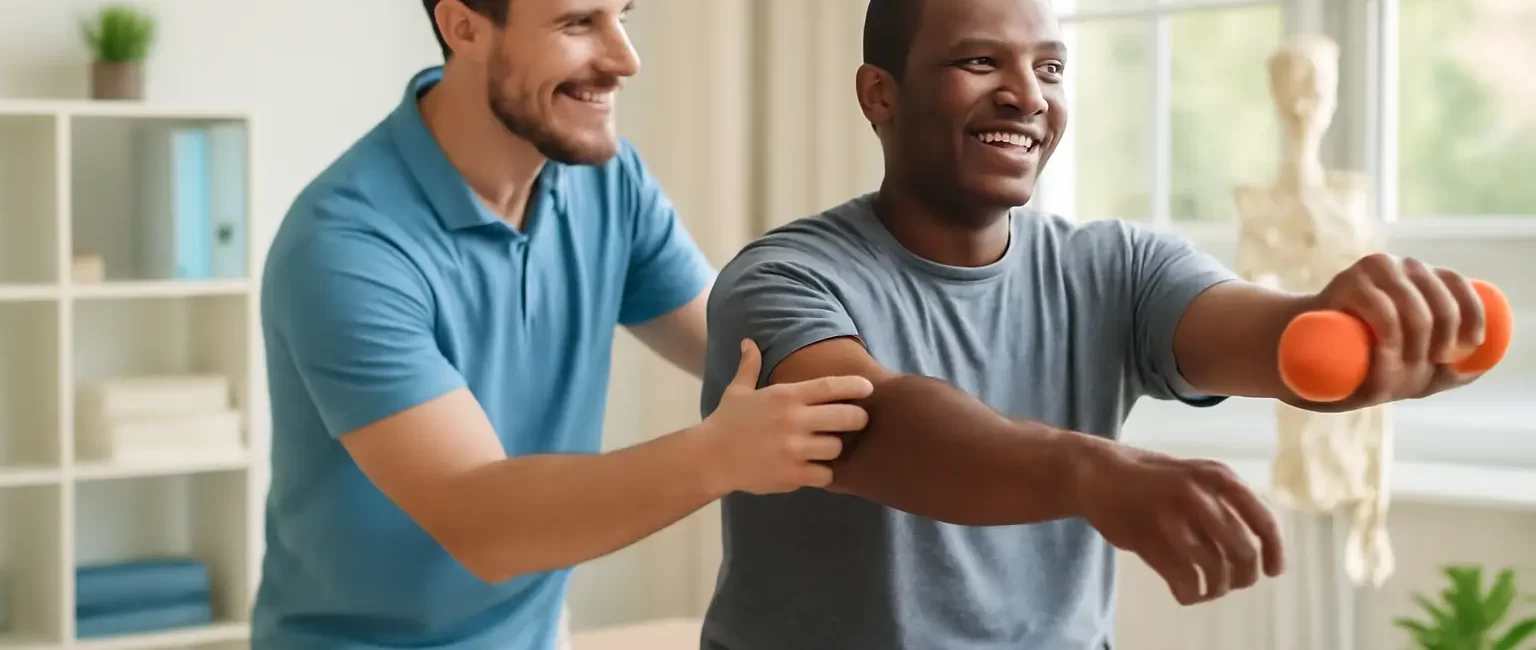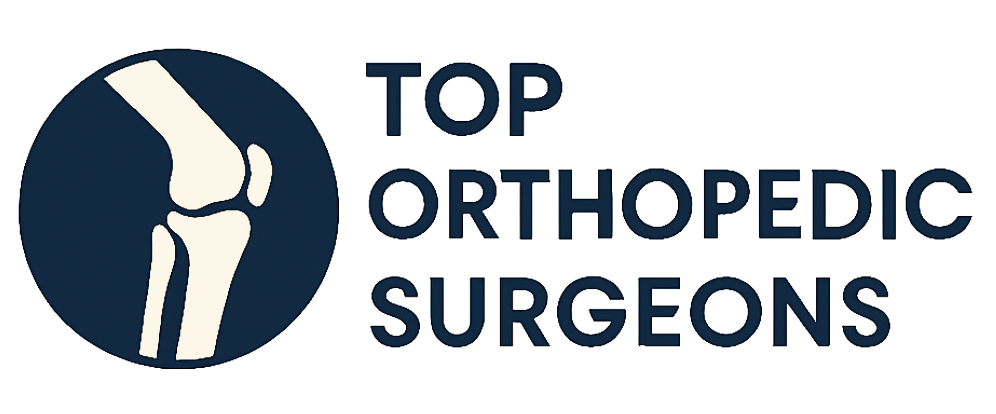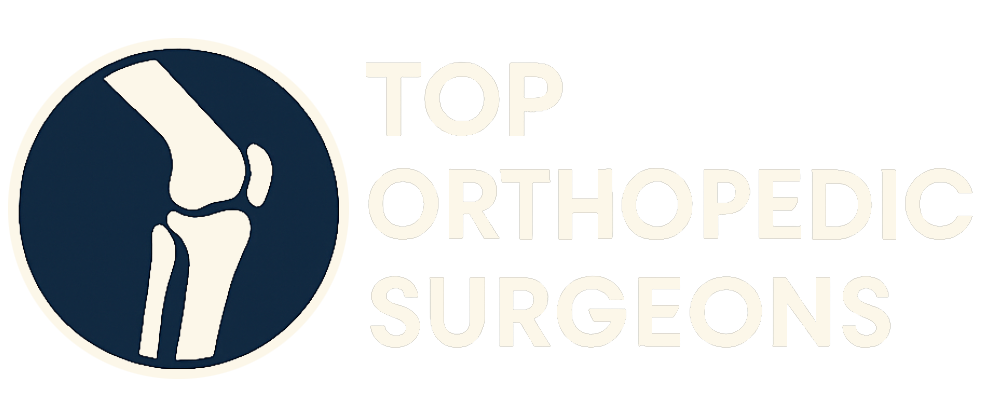
Embarking on orthopedic rehabilitation is a significant step towards regaining your strength, mobility, and overall well-being after an injury, surgery, or dealing with a chronic condition. This process can feel overwhelming, but understanding the fundamentals can empower you to take an active role in your recovery journey. This guide provides essential information about orthopedic rehabilitation, helping you navigate each stage with confidence and achieve the best possible outcome.
What is Orthopedic Rehabilitation?
Orthopedic rehabilitation is a specialized field of healthcare focused on restoring function and reducing pain related to musculoskeletal conditions. These conditions can affect your bones, joints, muscles, ligaments, and tendons. Rehabilitation programs are designed to meet your unique needs and goals, whether you’re recovering from a sports injury, managing arthritis, or undergoing joint replacement surgery.
The Goals of Orthopedic Rehabilitation
The primary goals of orthopedic rehabilitation include:
- Reducing Pain: Employing various techniques to alleviate discomfort and manage pain levels.
- Restoring Function: Helping you regain the ability to perform daily activities with ease and independence.
- Improving Strength and Flexibility: Strengthening weakened muscles and increasing the range of motion in affected joints.
- Preventing Further Injury: Educating you on proper body mechanics and strategies to avoid future problems.
- Enhancing Overall Quality of Life: Improving your ability to participate in activities you enjoy, leading to a more fulfilling life.
Who Needs Orthopedic Rehabilitation?
Orthopedic rehabilitation can benefit individuals with a wide range of conditions, including:
- Post-Surgical Recovery: Following joint replacement, fracture repair, or other orthopedic surgeries.
- Sports Injuries: Treating sprains, strains, tears, and other injuries sustained during athletic activities.
- Arthritis: Managing pain, stiffness, and inflammation associated with osteoarthritis, rheumatoid arthritis, and other forms of arthritis.
- Back Pain: Addressing acute or chronic back pain caused by muscle strains, disc problems, or other spinal conditions.
- Fractures: Rehabilitating after a bone fracture to regain strength, mobility, and function.
- Tendonitis and Bursitis: Treating inflammation and pain in tendons and bursae around joints.
- Amputations: Providing rehabilitation to improve mobility, strength, and independence after limb loss.
The Orthopedic Rehabilitation Team
Your rehabilitation journey typically involves a team of healthcare professionals working together to support your recovery. Key members of the team may include:
- Orthopedic Surgeon: The surgeon who performed your surgery or is overseeing your orthopedic care.
- Physical Therapist (PT): A licensed healthcare professional who specializes in restoring movement and function through exercise, manual therapy, and other techniques.
- Occupational Therapist (OT): A therapist who focuses on helping you regain the skills needed for daily living activities, such as dressing, bathing, and cooking.
- Athletic Trainer (AT): A healthcare professional who specializes in preventing and treating sports-related injuries.
- Physician Assistant (PA): A licensed healthcare professional who can provide a wide range of medical services under the supervision of a physician.
- Rehabilitation Nurse: A nurse who specializes in providing care to patients recovering from injuries or illnesses.
What to Expect During Orthopedic Rehabilitation
The rehabilitation process typically begins with a comprehensive evaluation by a physical therapist or other rehabilitation professional. This evaluation will assess your:
- Medical History: Review of your past and present health conditions.
- Pain Levels: Assessment of the intensity, location, and nature of your pain.
- Range of Motion: Measurement of how far you can move your joints.
- Strength: Evaluation of your muscle strength.
- Balance and Coordination: Assessment of your ability to maintain balance and control your movements.
- Functional Abilities: Assessment of your ability to perform daily activities, such as walking, climbing stairs, and lifting objects.
Developing Your Personalized Rehabilitation Plan
Based on the evaluation, the rehabilitation team will develop a personalized treatment plan tailored to your specific needs and goals. This plan may include:
- Therapeutic Exercises: Specific exercises designed to improve strength, flexibility, range of motion, and endurance.
- Manual Therapy: Hands-on techniques, such as massage, joint mobilization, and soft tissue mobilization, to reduce pain and improve movement.
- Modalities: Use of various physical agents, such as heat, ice, ultrasound, and electrical stimulation, to reduce pain and inflammation.
- Assistive Devices: Training in the use of assistive devices, such as crutches, walkers, or braces, to improve mobility and safety.
- Patient Education: Instruction on proper body mechanics, injury prevention strategies, and self-management techniques.
Types of Orthopedic Rehabilitation Therapies
A variety of therapies are used in orthopedic rehabilitation to address different aspects of recovery. Some common therapies include:
Physical Therapy
Physical therapy is a cornerstone of orthopedic rehabilitation. Physical therapists use a variety of techniques to help you regain movement, reduce pain, and improve function. These techniques may include:
- Therapeutic Exercise: Strengthening and stretching exercises tailored to your specific needs.
- Manual Therapy: Hands-on techniques to mobilize joints and soft tissues.
- Pain Management Techniques: Strategies to control pain, such as ice, heat, and electrical stimulation.
- Gait Training: Instruction on proper walking techniques.
- Balance and Coordination Training: Exercises to improve balance and coordination.
Occupational Therapy
Occupational therapy focuses on helping you regain the skills needed for daily living activities. Occupational therapists can help you with:
- Activities of Daily Living (ADL): Training in tasks such as dressing, bathing, and eating.
- Assistive Devices: Recommendations and training in the use of assistive devices to make daily tasks easier.
- Home Modifications: Suggestions for modifying your home environment to improve safety and accessibility.
- Ergonomics: Education on proper posture and body mechanics to prevent further injury.
Sports Rehabilitation
Sports rehabilitation is a specialized type of rehabilitation that focuses on helping athletes recover from sports-related injuries. Sports rehabilitation programs typically include:
- Sport-Specific Exercises: Exercises designed to mimic the movements required in your sport.
- Agility Training: Exercises to improve agility and quickness.
- Plyometrics: Exercises that involve jumping and other explosive movements.
- Return-to-Sport Progression: A gradual progression of activities designed to safely return you to your sport.
Aquatic Therapy
Aquatic therapy involves performing exercises in a pool. The buoyancy of the water reduces stress on joints, making it a good option for people with arthritis or other joint pain. Aquatic therapy can help you:
- Improve Range of Motion: The warm water can help to relax muscles and improve joint flexibility.
- Increase Strength: The resistance of the water can help to strengthen muscles.
- Reduce Pain: The buoyancy of the water can help to reduce pressure on joints and alleviate pain.
- Improve Balance: The water provides a safe environment to practice balance exercises.
Optimizing Your Orthopedic Rehabilitation
To get the most out of your orthopedic rehabilitation, it’s important to:
- Follow Your Treatment Plan: Adhere to the exercises and activities prescribed by your rehabilitation team.
- Communicate with Your Team: Let your team know if you’re experiencing any pain or discomfort.
- Be Patient: Recovery takes time, so don’t get discouraged if you don’t see results immediately.
- Stay Active: Continue to engage in activities that you enjoy, as long as they don’t aggravate your condition.
- Maintain a Healthy Lifestyle: Eat a healthy diet, get enough sleep, and avoid smoking.
The Importance of Patient Education
A crucial element of successful orthopedic rehabilitation is patient education. Understanding your condition, the rehabilitation process, and how to manage your symptoms empowers you to take an active role in your recovery. Your rehabilitation team will provide you with information on:
- Your Diagnosis: A clear explanation of your condition and its impact on your body.
- Treatment Options: An overview of the various treatment options available, including both conservative and surgical approaches.
- Rehabilitation Goals: Realistic and achievable goals for your recovery.
- Home Exercise Program: A detailed plan of exercises to perform at home to maintain progress.
- Pain Management Strategies: Techniques for managing pain and discomfort.
- Prevention Strategies: Tips for preventing future injuries or complications.
Overcoming Challenges in Rehabilitation
Rehabilitation can be challenging, both physically and mentally. Some common challenges include:
- Pain: Managing pain can be difficult, but it’s important to communicate with your rehabilitation team about your pain levels so they can adjust your treatment plan accordingly.
- Frustration: It’s normal to feel frustrated if you’re not making progress as quickly as you’d like. Remember to be patient and focus on making small, incremental improvements.
- Motivation: It can be difficult to stay motivated, especially if you’re in pain or feeling discouraged. Set realistic goals, reward yourself for achieving milestones, and seek support from friends, family, or a therapist.
- Adherence: Sticking to your rehabilitation plan can be challenging, but it’s essential for achieving the best possible outcome. Make your exercises a part of your daily routine and find ways to make them enjoyable.
The Long-Term Benefits of Orthopedic Rehabilitation
The benefits of orthopedic rehabilitation extend far beyond the initial recovery period. By participating in a comprehensive rehabilitation program, you can:
- Reduce the Risk of Re-Injury: Learning proper body mechanics and strengthening muscles can help prevent future injuries.
- Improve Long-Term Function: Regaining strength, flexibility, and range of motion can improve your ability to perform daily activities for years to come.
- Enhance Quality of Life: Participating in activities you enjoy can improve your overall sense of well-being and quality of life.
- Manage Chronic Conditions: Rehabilitation can help you manage the symptoms of chronic conditions, such as arthritis, and improve your overall function.
- Avoid Surgery: In some cases, rehabilitation can help you avoid or delay the need for surgery.
Choosing the Right Rehabilitation Program
Selecting the right rehabilitation program is essential for a successful recovery. Consider the following factors when making your decision:
- Qualifications of the Rehabilitation Team: Ensure that the therapists and other healthcare professionals are licensed and experienced in treating orthopedic conditions.
- Accreditation: Look for programs that are accredited by reputable organizations.
- Location and Convenience: Choose a program that is conveniently located and offers flexible scheduling options.
- Patient Reviews: Read reviews from other patients to get an idea of their experiences with the program.
- Insurance Coverage: Check with your insurance provider to see what portion of the program will be covered.
Embrace the Journey
Orthopedic rehabilitation is a journey that requires commitment, patience, and a positive attitude. By understanding the process, actively participating in your treatment plan, and seeking support from your rehabilitation team, you can empower yourself to achieve a successful recovery and regain a fulfilling and active life. Remember to celebrate your progress along the way and focus on the positive steps you are taking towards a healthier, more mobile future. Every small victory contributes to your overall well-being, helping you return to the activities you love and enjoy a higher quality of life.


